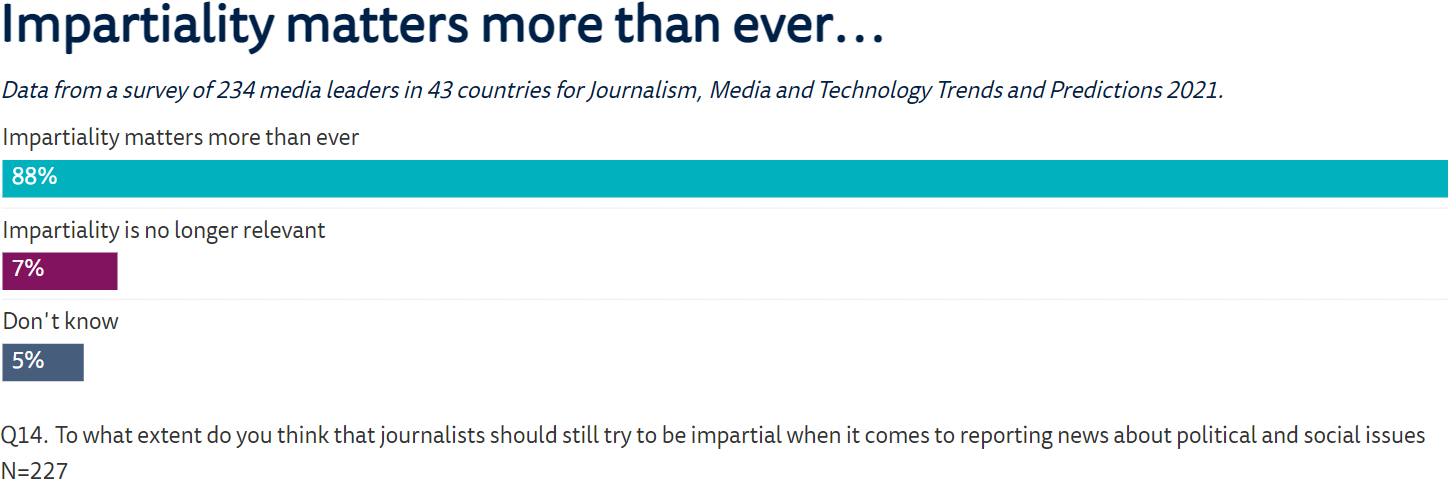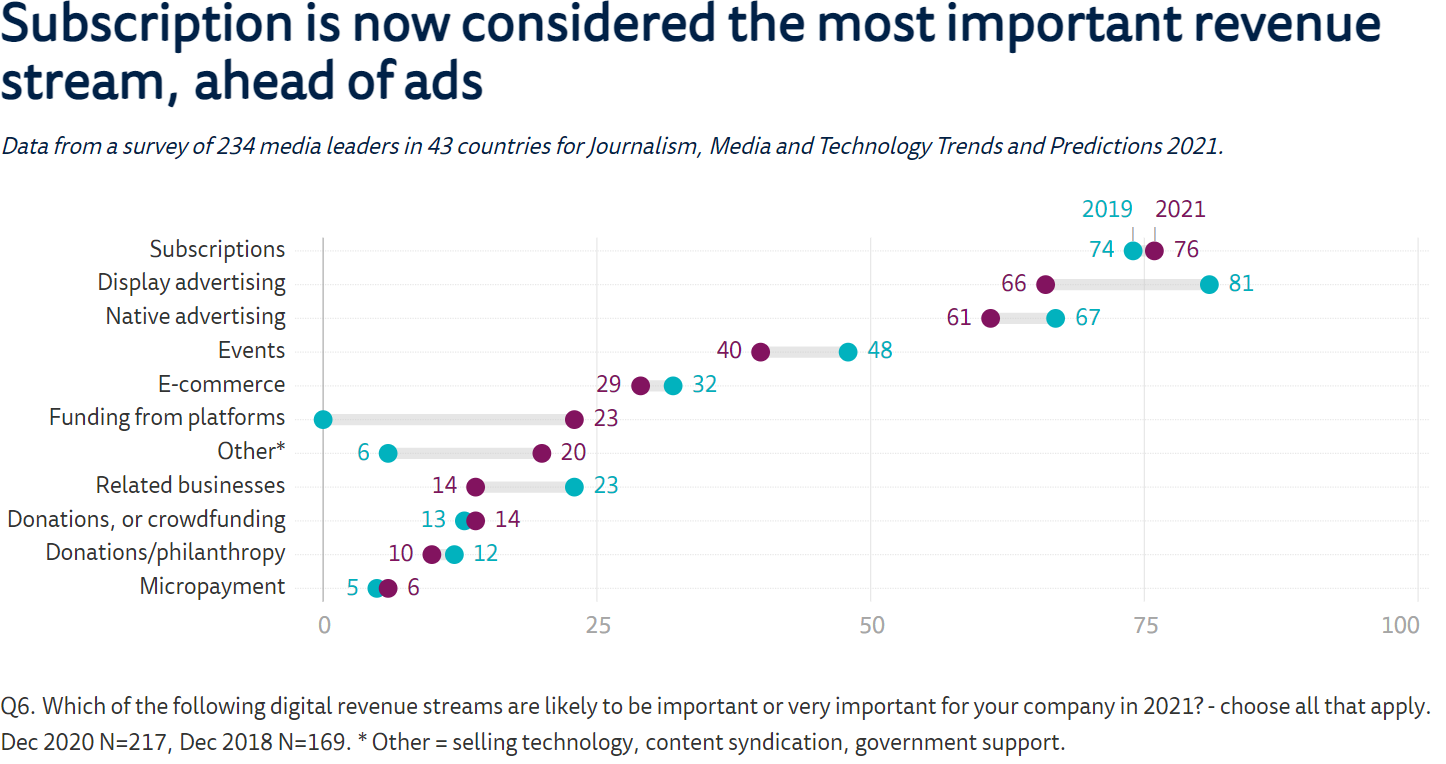Reuters Community
Five key ways media will transform in 2021
Trends and predictions at the intersection of journalism, media, and technology
The 2021 trends and predictions from the Reuters Institute for the Study of Journalism at the University of Oxford, and authored by Nic Newman, reflect both the abrupt worldwide disruptions experienced in 2020 and the media ecosystem’s continued evolution.
2020 was a year that saw a sea change in how media organizations, publishers, and content creators operate. In 2021, journalism, and the media at large, have a variety of opportunities to use those experiences to transform how they produce, distribute, and profit from their work. In many cases, it will be a combination of approaches that will drive innovation in the new year. Here are five key areas where journalism and technology will transform this year.
1. New ways of working
COVID-19 accelerated digital transformation worldwide. In 2021, expect to see an increase of hybrid work options. With more people used to working from home, media organisations can cut back their office space and save money.
Also, journalists will use their new familiarity with technology and work flexibility to get out of the office and do more face-to-face work in their communities.
Having had to innovate fast in 2020, interdisciplinary teams will keep moving things forward, particularly in favour of user experiences. More publishers also expect to use artificial intelligence to improve newsroom efficiency and produce a better product for users.

2. A renewed consideration of ethical standards
Having proved the importance of impartial, fact-based journalism in a global pandemic, the emphasis on impartial reporting will increase. Expect tensions between polarized political groups and the media to continue in 2021, with social media companies more likely to counter harmful and misleading content such as anti-vaccine messaging. In addition, there is the likelihood that more governments will step in to regulate online media to ensure that false and misleading content does not cause real-world harm.

3. The fusion of content with technology drives media consumption
Expect podcasts’ popularity to continue, especially with platforms such as BBC Sounds, Apple, and Spotify competing for exclusive talent. As with newspapers, subscription models are likely to increase in the coming year.
Several new devices, including ever smarter wearables, are on the horizon for 2021. Information, entertainment, and news will blend further into consumers’ lives by integrating smart speakers into consumer goods such as TVs and cars. Some new devices will accommodate both audio and video formats, such as Apple Glass and voice-assisted technology.
4. Subscription revenue is a top performer, but diversification is key
The lockdowns of 2020 were advantageous for subscription businesses from Netflix to news organisations. Subscriptions continue to lead the way as a revenue source in 2021 but the challenge will be to hold on to paying consumers and avoid churn. Big players in media publishing are forecast to benefit the most from this trend although new platforms focused on newsletters or podcasts are also muscling in.
Publishers feel that having diversified revenue streams is essential for survival. Many are looking to affiliate revenue and e-commerce, where they extend their brand authority into retail goods created for their audiences.

5. Content formats innovate to stay engaging
Look for media outlets to continue holding virtual events to connect with their audiences. This year, the emphasis is on producing a more polished and user-friendly product – and to bring back some level of in-person events once the situation allows. Emailed newsletters are still high on the priority list to engage, inform and entertain consumers is forecast to keep growing in users and revenue – although with a health warning that as social distancing eases, consumers may whittle down their subscriptions to free up their inboxes and time.
2020 threw everything in the air. Our work, home and social lives have all been digitalized more and faster than expected. The momentum will continue but 2021 will be more about making this year better, despite lingering challenges. The optimization of work patterns, revenue streams, and content distribution will transform the media landscape, to address financial, ethical, and consumer demands.
